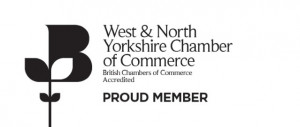We have been working on our School Condition Allocation (SCA) approach for over 4 years now. We have had the opportunity to work with growing forward thinking trusts and develop a strategy that delivers maximum value with SCA funding with a vision to improve each trust in a bespoke manner based on their needs.
Introduction
It first started with our involvement with diocese voluntary aided schools and academies receiving CIF funding. Both had different priorities of funding, methods of obtaining funding and methods of procurement. See our article on CIF and why we think SCA is better.
When our first academy trust reached the criteria, 3,000 pupils and 5+ schools to receive SCA funding, we worked closely with the trust to devise an internal funding method to distribute the SCA funding fairly and effectively. In the first few years, we trialled an internal bidding system similar to CIF funding where individual schools would make a case for funding and a hybrid system where school bids for the funding would be assessed against the trust knowledge of condition need. Both had some successes however were clunky, they did not allow for future planning and gave very little regard for the Good Estates Management Guide.
So where are we now and what is our approach?
Our approach starts with understanding the condition need. This does not happen overnight and we are not talking about a quick condition survey similar to the flimsy Condition Data Capture undertaken by the Department of Education. We build up knowledge of trusts and the trust’s entire school sites through undertaking condition surveys, integrating ourselves with the trust’s team to understand challenges, pitfalls and the future of each site and over time, build a broad understanding of the trust’s current condition and condition potential in the future.
This only happens through achieving the right balance of both collaborative working and quality condition surveys and takes time.
Condition surveys
Our condition survey format has been developed over a number of years. It predates CDC and has been adapted over time to meet the requirements of a changing Good Estate Management Guide, local authority guidance and the needs of trusts, diocese and schools. The main focus of our surveys is to identify and offer detailed remedy on significant capital expenditure. Our stress test is that the report should be the start of a project specification and give enough information to understand what the extent, scope, disruption and programme to the rectification project might be.
Collaborative working
Our condition survey could be the best in the world but without collaborative working, they are often useless. The surveys are a tool rather than an instruction manual. They are there to discuss the future of each site, develop a bespoke plan in relation to the site, the wider trust and future possible funding. Without this collaborative approach and sitting down to review the surveys, operational issues, functionality and future plans for schools can often be missed, leading to incorrect prioritisation and ultimately misspent SCA funding.
After a relatively short amount of time after completing the condition surveys and having a productive fully integrated discussion and meetings with the trust, we can be fully up to speed with the trust’s estate. This is where we can add real value to the SCA process and other estate and facilities issues. With the trusts we are currently partnering with, we often get urgent phone calls out of the blue with immediate or ongoing issues that require attention, knowing each school site, both the condition and from an operation perspective, we can immediately advise assist and hopefully calm the nerves of the trust’s team and come up with a planned rectification without delay.
Keeping us at arm’s length means we are never truly integrated and can never fully comprehend the challenges of the trust or individual schools.
Things change
When you have spent a long time working on a plan you are proud of, it can often be difficult to accept change. However, especially in recent years, we have become accustomed to changes in legislation, guidance and funding in very difficult times in terms of school term time but also at funding cycles.
Accepting that the SCA approach will change at any time, with projects accelerated, altered or even cancelled days before the work start on site is imperative to getting the best result.
We have worked with two schools recently that had been identified for considerable SCA projects. During the planning and preparation of these projects, both schools were identified for the School Rebuilding Programme. Rather than pushing ahead with the works as planned, knowing that the school was going to receive either a full refurbishment or be rebuilt, we adjusted the projects to safety critical and closure critical items only. We were also able to provide detail and assistance with the application, survey and design process of the School Rebuilding Programme to try and give our knowledge of the site. This approach meant that funds could be redistributed to other schools in the trust who were, unfortunately, not going to receive the School Rebuilding Programme.
Time is everything
With SCA funding, you have the freedom to survey, design, procure and undertake the works to meet the needs of the trust and site, rather than a strict funding scheme timeline such as CIF.
To maximise value for money, you need to truly exploit this freedom. As we all know, summer school works can attract a premium as contractors, suppliers and consultants all reach their capacity during this busy 6-week period. Some projects need to be undertaken in the summer holiday, due to health and safety, operational and disruption issues. However, where they can be managed safely and undertaken without disruptions, teaching and learning trust should prioritise undertaking works outside of the 6-week holiday. The value for money, contractor responsiveness and increased labour can mean the projects are delivered quicker and cheaper than within the 6-week summer holiday. This year, at one trust, we have delivered approximately 30% of the scheme’s pre-summer holidays, allowing for the likes of flat roofing and toilet refurbishments to be completed in term time and utilising half terms. This allows for the remaining 70% of projects to receive full attention and resourcing during the busy period.
The timing of procurements can also pay dividends in contractor’s allocation and pricing of works. We all know that CIF funding has led to a vacuum of contractors and elevated prices on key CIF type projects that are procured and undertaken in line with the CIF timeline. Designing and procuring projects in advance of CIF projects leads to greater value for money and early commitment on projects from contractors.
Delivery
Whilst other funding streams such as CIF focus on the price for obtaining funding for a project, the success of SCA is in the delivery of the right works at the right time in line with SCA guidance and budgets.
Real local technical expertise cannot be valued highly enough. From getting the design right to knowing the right contractors for the project, a local and technical approach more often than not spells success.
Getting the initial design and procurement right will set the project up with the best chance of success. As discussed, clearly knowing the site and the buildings will help but having a team who know construction technically and have an understanding of the design and operation of education facilities is highly valuable. Couple this with a tried and tested network of reliable local contractors who are used to working in school environments, everything should be in place for a successful project start.
Construction projects generally, and especially during the 6-week summer holidays, are fraught, things come up, things go wrong, things change and mistakes are made. This is just the nature of construction. The only variable is the speed and knowledge in which these issues can be addressed. Having a local technical consultant on hand instructed on a full turnkey basis often means a response within minutes, not hours with a solution ready to go. Any time saved during the delivery of a school project can mean the difference between school opening on time or not.
Reflection
Reflection at the end of the project or series of projects is the pinnacle of collaboration. Taking the time to critically analyse your own, others and a collective performance over a challenging period or challenging single project is imperative to the ongoing improvement and maximising the value of SCA delivery.
Not one standard approach fits every trust or every school project, learning this quickly, adapting and implementing changes will lead to a more refined approach and maximise the value of both the internal trust’s team and external consultants.
Repeat
And the process starts again! SCA can be as relentless as the CIF cycle. A year seems a long time but the successful delivery of a SCA programme is in the time identification, review and preparation.



